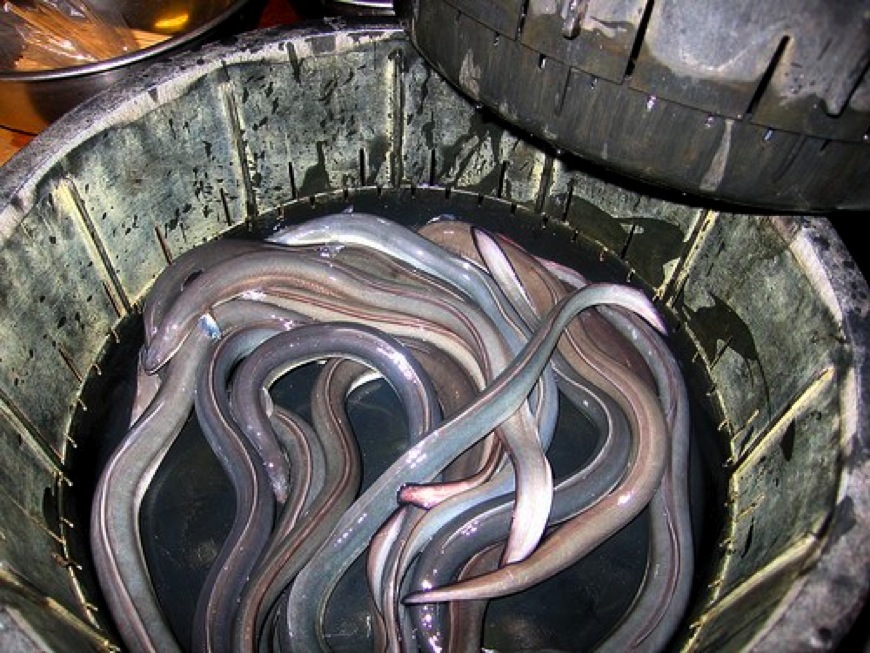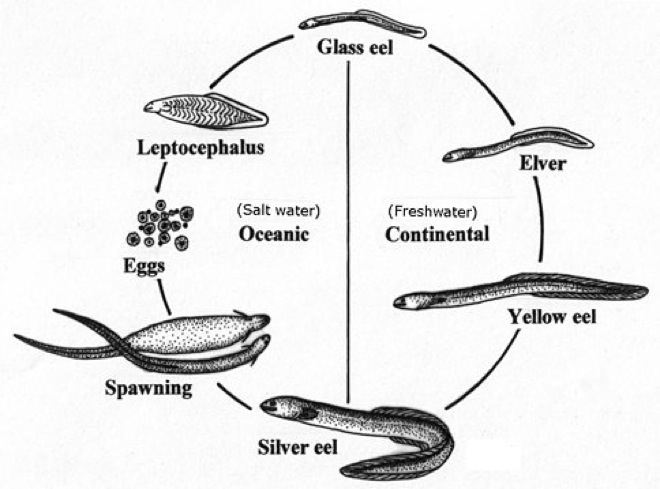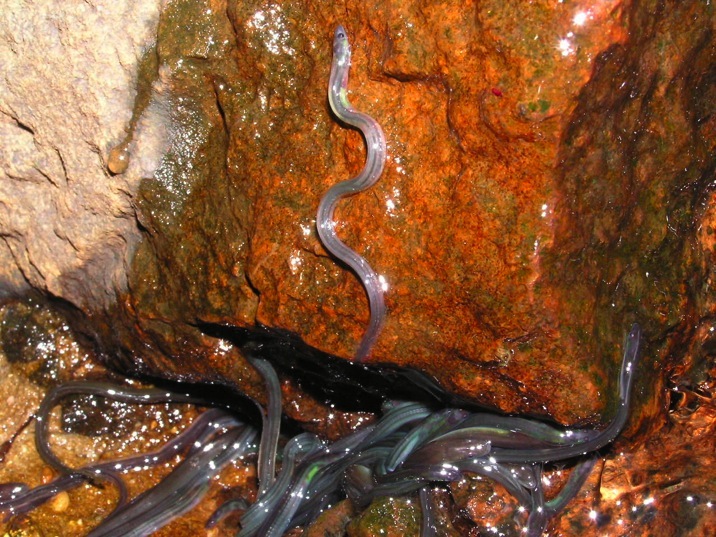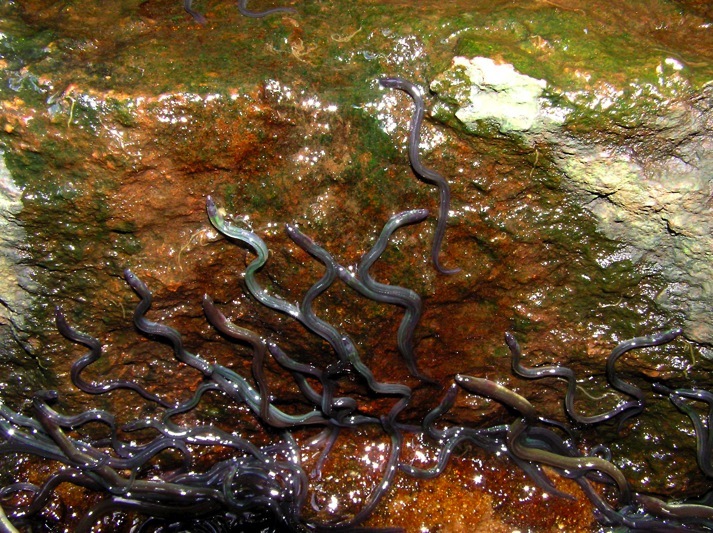

The Cycle of Life...
The Japanese eel has a very unusual life cycle. First of all, the eel, like all freshwater eels, is catadromous. This means that the organism splits its life cycle into freshwater stages and marine stages, much like how your grandparents run for warmer pastures as soon as winter knocks on the door. (Wisconsin specific joke, sorry if you missed out) In the case of the eel, it isn’t the weather they’re seeking, but rather appropriate spawning conditions. When a mature eel is ready to spawn, it begins its journey to the sea. At this point, the eel actually stops eating and loses digestive functioning! It will make the journey powered solely by fat reserves. Once undertaking the journey, they are very persistent. They can actually leave the water to travel around obstacles or to other bodies of water! They do this by taking advantage of their elongated, muscular body. They have developed similar adaptations to terrestrial snakes, which allows them to slither.

Eels awaiting Cooking
A bucket of eels sitting in a Japanese restaurant. Image courtesy of angellari18.

What’s the life of a Japanese eel like?
Once the eel reaches the ocean, its task is not yet complete. The Japanese eel has a very specific spawning point, where every member of the species on the planet goes to spawn. This location is nearby an area known as the Suruga Seamount, located East of Guam. This location was only recently revealed, and the extent of its significance is not yet know. For now, we only know that the location maximizes the efficiency of entry into the Kuroshio current, a powerful ocean current that leads them directly into the coastal areas they are normally found. The eggs are laid, and the mature eels die. The eggs hatch into leptocephali, paper thin transparent larva, and are carried by the Kuroshio current.. This process takes from 1 to 5 years before the eels reach freshwater. Sometime during the journey, they transform into glass eels, which are more elongated and eel like, but still transparent. Once they reach freshwater, they develop into elvers, which are smaller versions of the adult form. Over the next two years, they mature into yellow eel adults. They live as yellow eels for 5-20 years before maturing into silver eels which return to the ocean to spawn. As you can tell, this is a complex, and seemingly long life cycle for a fish!
Want to know more?
Click here for a great source of information on the whole Anguilla genus, including great life cycle information. Also, try here for a direct link to an excellent picture of leptocephali devolopment from the same article.
An eel slithering on the grass. He is leaving an isolated pond, presumably for a stream or river.
Photo courtesy of BluesKyPol.
An excellent representation of the Eel life cycle. © Queen's Printer for Ontario, 2009.
.
.
Above: Elvers climbing over an obstacle.
Below: A mix of glass eel and elvers. Images courtesy of Tim Watts.






